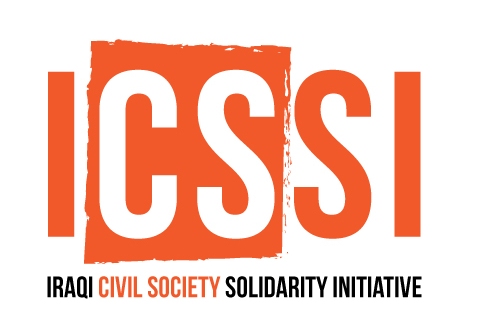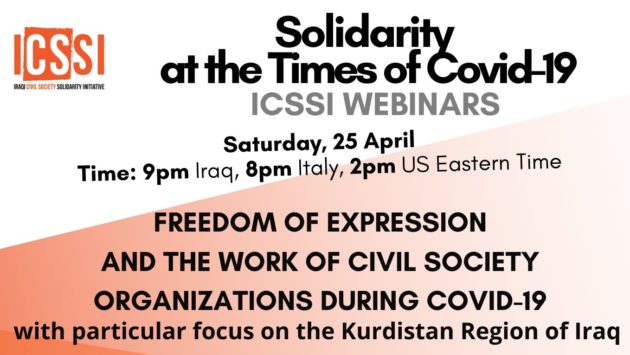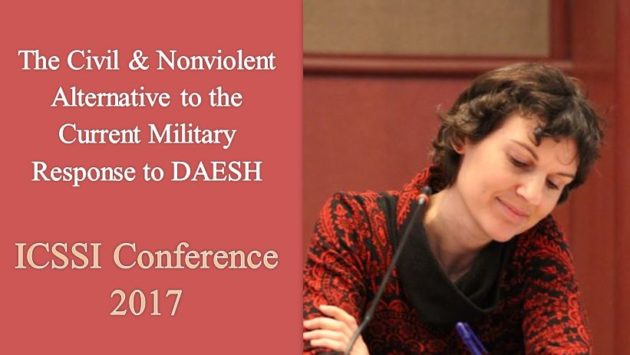Zaytun Bridge: A Report on the Violations in Dhi Qar Governorate
Zaytun Bridge: A Report on the Violations in Dhi Qar Governorate by the Sergio di Mello Team (SDMT) of the Peace and Freedom Organization
On 21 February 2020, the Peace and Freedom Organization and its team, Sergio di Mello, which monitors the human rights situation and fundamental freedoms in the field, issued a special report on the demonstrations in Dhi Qar Governorate covering the period from 1 October 2019 to 10 February 2020.
The initial results indicate that serious human rights violations have been committed and continue to be committed amidst the massive demonstrations that started on 1 October 2019 in Dhi Qar province in southern Iraq, and which are still going on today. Protestors are calling for an improvement to the economic situation of Iraqi citizens, including the provision of basic services to all. The protests in Dhi Qar have coincided with the start of other demonstrations in more than 9 different Iraqi provinces.
Despite the peaceful nature of these demonstrations, law enforcement officials and armed groups supported by the government, along with other unknown armed groups, have responded with violence, using measures that have been described as oppressive. They have often dealt with the nonviolent demonstrators by launching coordinated attacks, some directed towards peaceful gatherings and large crowds. There have also been carefully planned and pointed attacks on individuals who participated in the demonstrations or provided them with support.
Measures used against demonstrators in Nasiriyah have led to clear breaches of relevant international and local law, some of which would be classified as direct gross violations, such as arbitrary killing. Senseless killings have occurred outside the public sites where demonstrations take place; some have been documented in areas where coordinated demonstrations are not even happening. Excessive violence has been inflicted on those taking part in sit-ins and other forms of peaceful protest and has also been used in carefully planned assassinations by organized groups that are still unknown.
Violations involving the arbitrary restriction of personal freedom which directly conflict with established law has been one of the most common methods used to suppress the demonstrations. These restrictions have been accompanied by painful, degrading and inhuman treatment of protesters.
Both the institutional and ‘extra’ institutional actors referred to above have used force and firearms consistently, and often in a random manner: sometimes they have used snipe attacks against demonstrators, and to date have not explained why this arbitrary use of violence is necessary. The use of force lacks all sense of proportionality (recall the protestors have been almost entirely nonviolent), and does not give any thought to the danger of escalation. It should be noted that despite the unlawful use of firearms against them, the demonstrators continue to work peacefully wherever possible. Government and other militias have even ceased to adhere to rules regulating the type of weapon approved for battle for regular military forces and instead have used weapons intended for hunting, equipped with deadly ammunition known as “iron balls”. These weapons have led directly to dozens of deaths and injuries. Evidence indicates that most of the time when force and firearms were used, there was no accompanying circumstance that could be described as an imminent danger.
The goal of many of these attacks remains unclear, most were launched by law enforcement officials who had no explicit rationale to justify their use of extreme violence. Rather, most responses to the demonstrations seemed to revolve around orders simply to contain and end them — by any means necessary. Because of this, the authorities often used law enforcement agents who have not been trained to deal with large public demonstrations.
The worst violations of relevant international and local laws have been those against human rights defenders, civil society activists, journalists, media workers, medical staff and medical units inside and outside hospitals. To date, no attention has been paid to the need to provide the necessary protection to the most vulnerable groups who are demonstrating: women, children, persons with disabilities, and the elderly, all of whom have been exposed to excessive violence.
Many of the killings and kidnappings that target human rights defenders and civil society activists are carried out at the places where demonstrations occur. They happen fast and without warning, and are said to be limited to the responsibility of “militias”, “third parties”,“unknown armed groups” or “parallel forces”. Other names have been used, but whatever the name, the official line has been that these lightning attacks are committed by non-governmental bodies.
In addition to physical violence, media campaigns were launched, both on TV channels and through social media, which aimed to demonize demonstrators, to stigmatize them with offensive nicknames or accusations that impact their sense of what it means to be a citizen. These campaigns challenge the honor and betray those who are working to bring about needed change.
In response to the dozens of victims falling around them, the demonstrators set fire to some buildings housing formal and semi-formal political institutions. They were careful to do no harm to buildings connected to the provision of services. At times, demonstrations prevented student protesters and children in primary education from attending their schools, while others prevented some employees of official departments of the local government from going to their jobs (for instance, municipal council employees). This form of escalation had the aim of pressuring the government to respond to protesters’ demands.
The report provides a general and comprehensive view of the violations committed during the demonstrations. The Peace and Freedom Organization (PFO) seeks to provide greater information to the local, regional and international community on the context in which these violations were committed so as to prevent them from occurring again. The Iraqi government has a responsibility to address the findings in this report.
To read the full report: Click here




